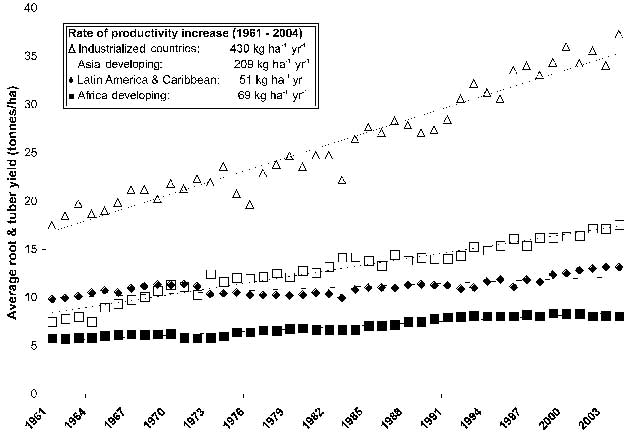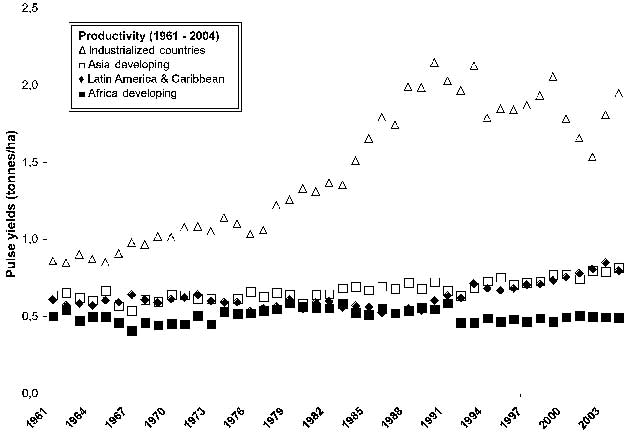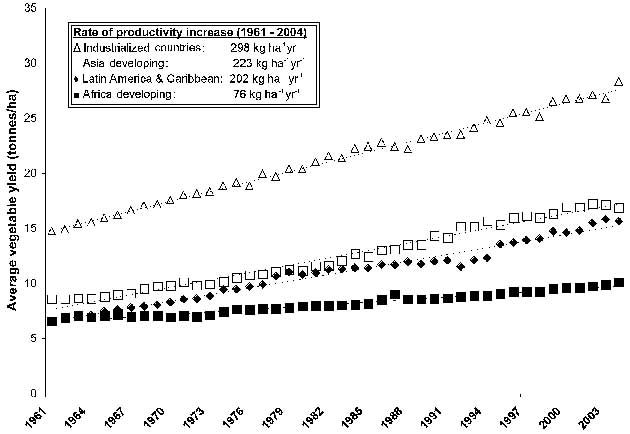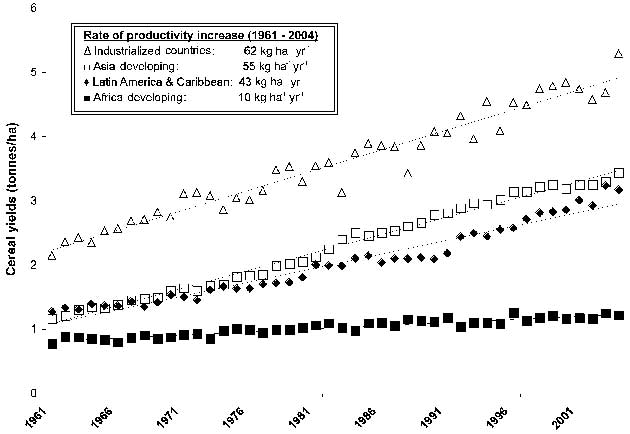



| Previous | Return to table of contents | Search Reports | Next |
| « Back to weltagrarbericht.de | ||
150 | IAASTD Global Report
 |
 |
 |
 |
Figure 3-2. Yield of (a) roots and tubers, (b) vegetables, (c) pulses, and (d) cereals between 1961 and 2004. Source: FAOSTAT, 2007.
|
Global fish production (wild harvest and aquaculture) has increased by about 230% between 1961 and 2001
Between 1961 and 2001, global fish production (wild harvest and aquaculture) for all uses increased by about 230% from 39.2 million to nearly 130 million tonnes. Developing countries supply 75% of the volume and 50% of the value of the global fish trade (Kurien, 2004). Together the developing countries of Asia form the largest fish producer, with production reaching 71.2 million tonnes in 2001 (FAOSTAT, 2005). Aquaculture currently provides approximately 40% of the world's total food fish supply (Delgado et al., 2003ab; Kurien, 2004). Technological breakthroughs in aquaculture, triggered by private sector growth, increased demand for high-value fish in the world market and simultaneous changes in international laws, treaties and institutions, contributed to the rapid growth in fish supply (Ahmed and Lorica, 2002). |
3.2.1.1.1 Trends in resource use (land, water, genetic resources, fertilizer, pesticides and mechanization) Globally, land reserves have been severely depleted by cultivation
Africa and Latin American countries do have significant tracts of undeveloped land that could be cultivated, but estimates suggest that only a small fraction these areas (7% Africa, 12% LAC) are free from the types of severe soil constraints that limit profitable and sustainable production (Wood et al., 2000). Moreover, many of the remaining undeveloped areas are of regional and global importance for biodiversity and ecosystem services (Bruinsma, 2003). The need to preserve natural areas and to avoid production on marginal lands (e.g., highly erodible hill slopes) provides strong incentives for advancing agricultural production through yield intensification (i.e., production per unit area) rather than area expansion. |
|||||||||||
| Previous | Return to table of contents | Search Reports | Next |
| « Back to weltagrarbericht.de | ||